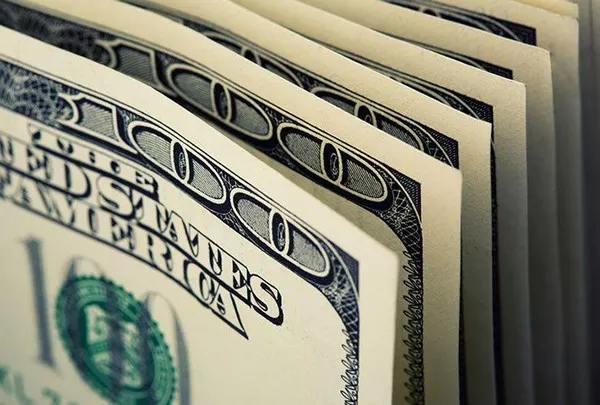The United States dollar, the world’s primary reserve currency for decades, has long played a pivotal role in global economic stability. However, as we stand on the precipice of a new era, marked by technological advancements, geopolitical shifts, and economic transformations, the future of the dollar appears to be at a crossroads. In this article, we will explore the key factors influencing the future of the dollar and the potential scenarios that may unfold in the coming years.
Geopolitical Dynamics
One of the primary determinants of the dollar’s future is the evolving geopolitical landscape. The United States has traditionally held a dominant position in global affairs, but emerging powers are reshaping the geopolitical order. The rise of China as an economic powerhouse and a contender for global leadership introduces new dynamics that could impact the dollar’s supremacy.
China’s ambitious Belt and Road Initiative, its push for internationalization of the yuan, and the establishment of alternative financial institutions challenge the dollar-centric world order. While the dollar is unlikely to be displaced overnight, a gradual shift towards a more multipolar currency system seems inevitable. The dollar may continue to coexist with other prominent currencies, such as the yuan and the euro, in a diversified global financial landscape.
Technology and Digital Currencies
The rapid advancement of technology, particularly in the realm of digital currencies, has the potential to reshape the future of the dollar. Central bank digital currencies (CBDCs) are gaining traction, with several countries exploring or already piloting their own digital currencies. The emergence of digital currencies poses both challenges and opportunities for the dollar.
On one hand, a digital dollar could enhance efficiency, reduce transaction costs, and foster financial inclusion. On the other hand, the increased use of digital currencies may lead to a decrease in demand for physical cash and traditional banking services. This shift could impact the Federal Reserve’s ability to implement monetary policy through traditional means.
Cryptocurrencies, such as Bitcoin and Ethereum, also add a layer of complexity to the future of the dollar. While these decentralized digital assets currently exist alongside traditional currencies, their potential to disrupt the financial system cannot be ignored. Governments and central banks are grappling with how to regulate and integrate cryptocurrencies into the existing monetary framework.
Economic Factors
Economic considerations play a crucial role in shaping the future of the dollar. The United States’ fiscal policies, monetary decisions, and overall economic health influence the currency’s global standing. The unprecedented monetary stimulus measures taken in response to the 2008 financial crisis and, more recently, the COVID-19 pandemic have raised concerns about the long-term stability of the dollar.
The accumulation of high levels of public debt, coupled with the potential for sustained inflation, poses challenges to the dollar’s value. Investors and central banks around the world closely monitor these economic indicators, and any perceived weakness in the U.S. economy could trigger shifts in global currency preferences.
Global Trade and Dollar Dominance
The dollar’s status as the world’s primary reserve currency is closely tied to its role in global trade. Many commodities, including oil, are priced and traded in dollars, creating a constant demand for the currency. This “petrodollar” system has provided the United States with significant economic advantages but also makes the dollar vulnerable to fluctuations in global trade dynamics.
As international trade patterns evolve, and alternative payment systems gain prominence, the dollar’s dominance may be subject to reevaluation. The creation of regional trade agreements, such as the European Union’s efforts to boost the euro’s role in international trade, could challenge the dollar’s monopoly in certain regions.
Scenario Analysis: Potential Futures for the Dollar
Continued Dominance: The dollar maintains its status as the primary reserve currency, supported by the resilience of the U.S. economy, effective policymaking, and global trust in the currency. This scenario would likely involve ongoing efforts to address economic challenges, promote financial stability, and adapt to the changing geopolitical landscape.
Multipolar Currency System: The world transitions towards a more diversified global monetary system where multiple currencies, including the yuan, euro, and digital currencies, coexist. The dollar remains influential but loses some of its exclusive dominance, leading to a rebalancing of economic power.
Digital Dollar Era: The United States successfully introduces a widely adopted digital dollar, leveraging technological advancements to enhance financial efficiency and maintain its competitive edge. This scenario requires effective regulation, technological innovation, and public acceptance of digital currencies.
Decline and Replacement: External pressures, economic challenges, or geopolitical shifts lead to a gradual decline in the dollar’s prominence. Another currency or a combination of currencies takes its place as the primary reserve currency, marking a significant shift in the global economic order.
See Also What Is The Buying Rate For Us Dollars
Conclusion
As we contemplate the future of the dollar, it becomes evident that multiple factors will influence its trajectory. Geopolitical dynamics, technological advancements, economic considerations, and global trade patterns all play pivotal roles in shaping the destiny of the world’s primary reserve currency.
While the dollar’s future is uncertain, one constant remains: adaptability. The ability of the United States to navigate the challenges and opportunities presented by a rapidly changing world will determine whether the dollar continues to reign supreme, transforms into a key player in a multipolar system, embraces digital innovation, or undergoes a fundamental shift in its role on the global stage.
Policymakers, financial institutions, and market participants must remain vigilant, proactive, and adaptable to ensure that the future of the dollar aligns with the evolving needs of the global economy. As we stand at this pivotal juncture, only time will reveal the path that the dollar ultimately takes and its implications for the broader landscape of international finance.


